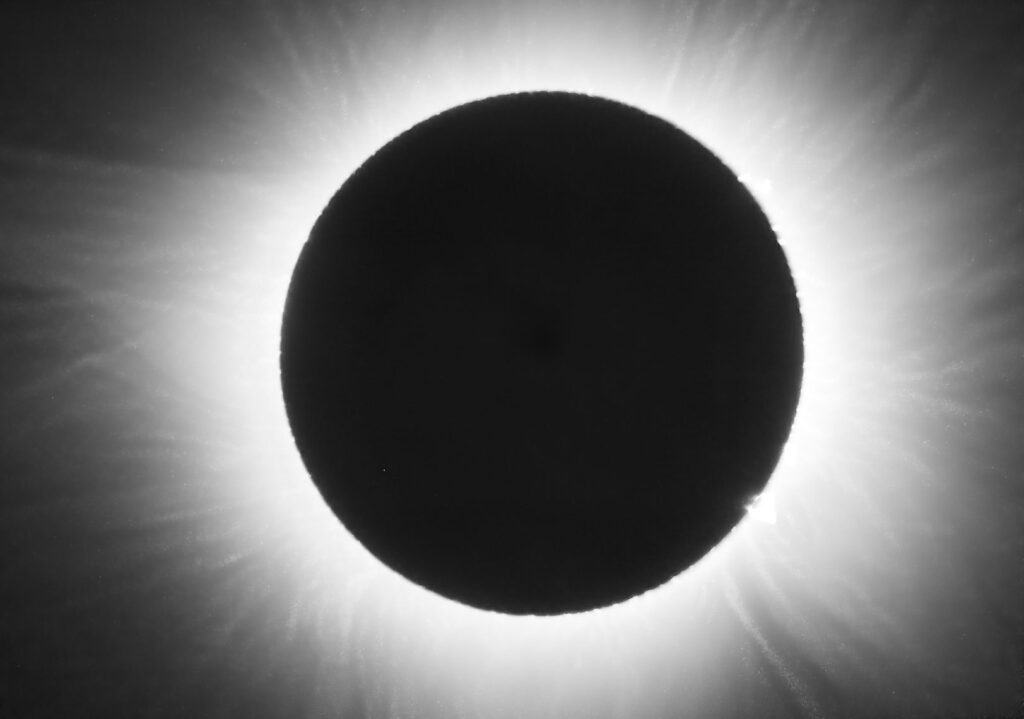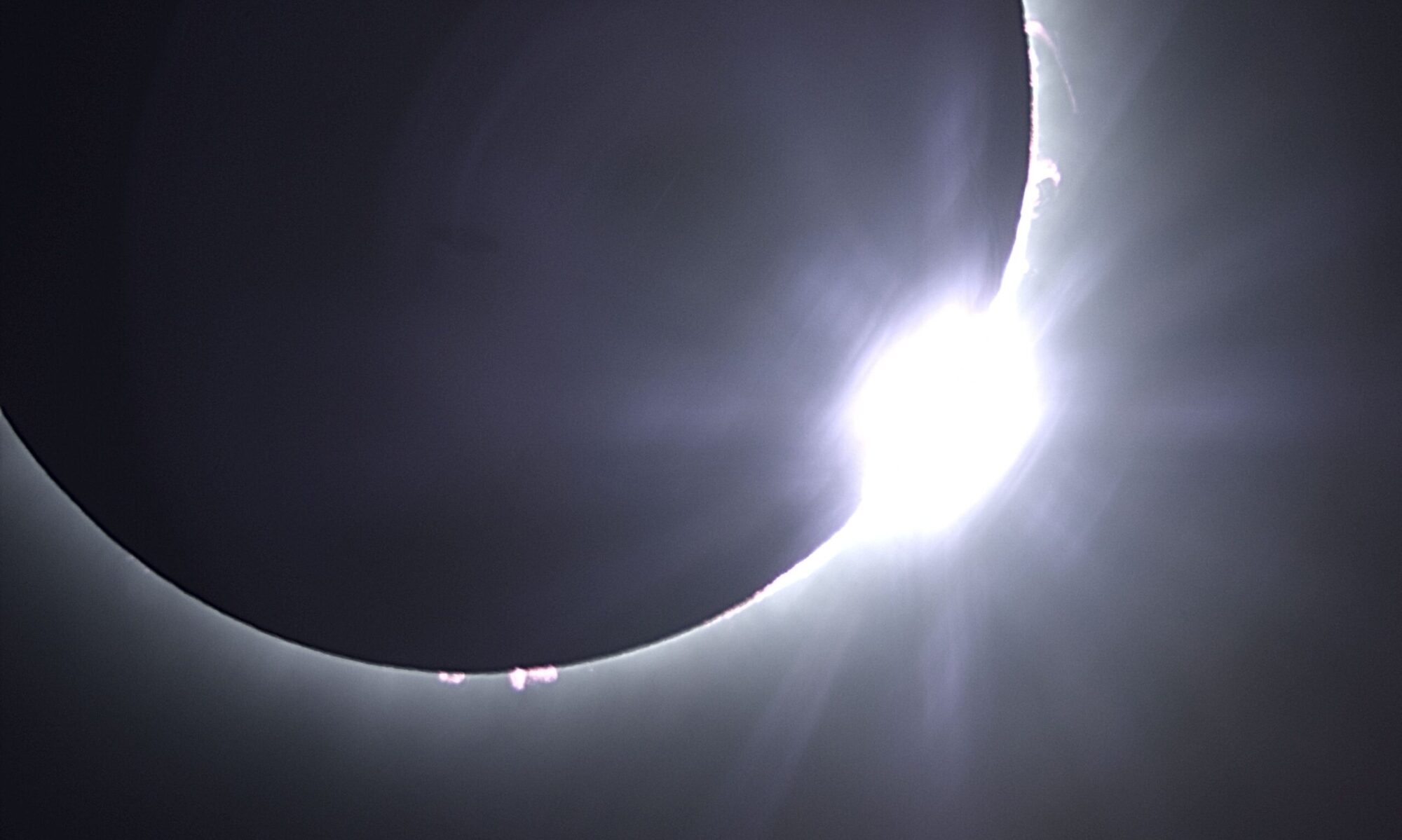The corona is the outermost component of the Sun’s ‘atmosphere’ and extends millions of kilometers into space. It consists of a mixture of plasma (ionized gases), free electrons, and tiny dust grains that mostly reflect the broad spectrum of light coming from the Sun’s bright photosphere. However, because of its very low density, this reflected light cannot be seen except during a total eclipse (or by the use of special instruments called coronagraphs). How the corona attains its extremely high temperature (well over a million kelvin) is still the subject of ongoing research, but most explanations center on energy being transported outward via the Sun’s magnetic field.
Mackenzie Henley’s project was to image the Sun’s corona during the eclipse by using the technique developed for the Citizen Cate project conducted during the 2017 total eclipse. During totality, she used a 500 mm focal length telescope coupled to a monochrome camera to take sets of bracketed exposures from 0.4 ms to 1 s. The reason for this bracketing was to capture images of different parts of the corona, which drop off rapidly in intensity with distance from the Sun. These exposures were then combined to create a high dynamic range (HDR) image and processed to enhance the structures within the corona. Here is Mackenzie’s final image:

Of particular note is a darker streak extending out at the lower right, from the same area of the surface as a major prominence. It is thought that this an ‘open flux tube’, further supporting the idea that active regions on the surface of the photosphere drive many of the phenomena seen higher in the chromosphere and corona and that these are all linked by structures within the Sun’s magnetic field.

